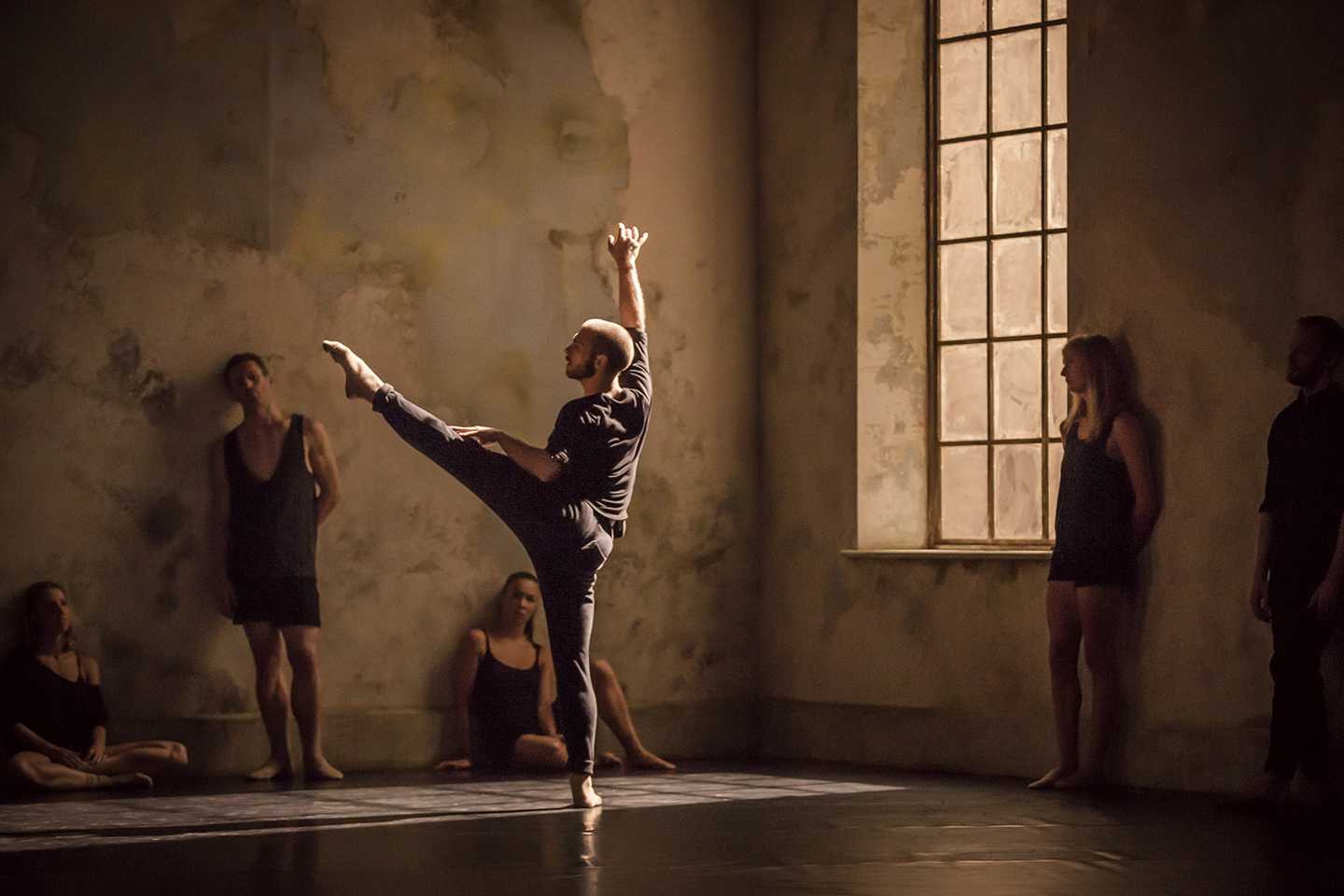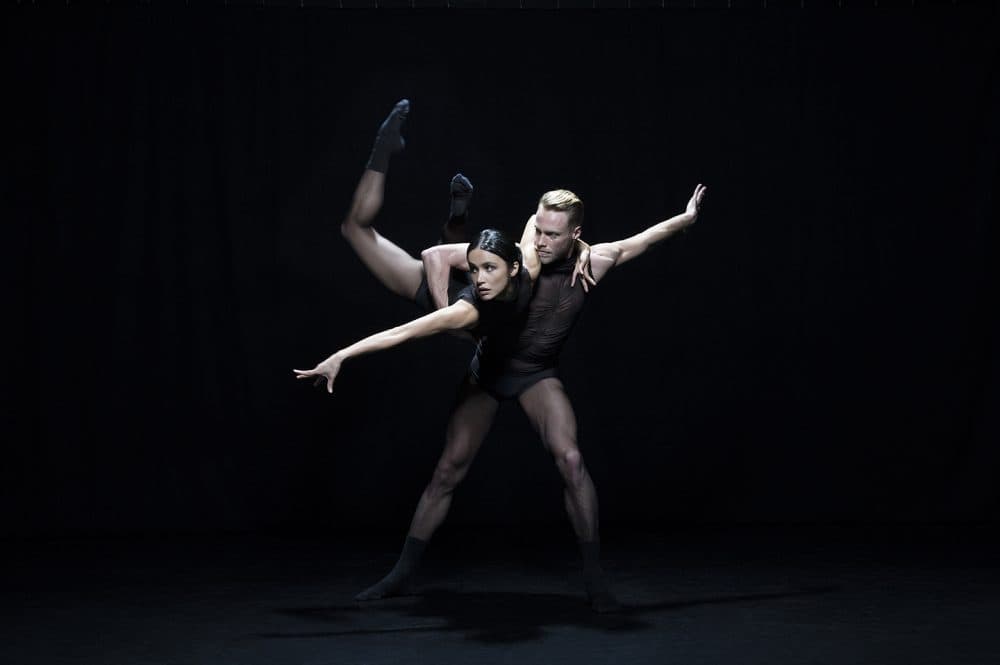Advertisement
Sydney Dance Company Brings 'A Beast Of A Program' To Boston

With the flick of a switch, the warm golden light pouring in through the window vanishes, revealing the motionless silhouettes that filled the stage moments earlier. The quiet space suddenly becomes a scene of controlled chaos as dancers move frantically, some in sync with one another, to the seemingly ominous music.
The dancers movement is confined within a makeshift room, and at times, their shadows appear on the far wall, replicating the choreography but unable to escape the flat surface no matter how large they become. The dark replicas loom as troubles often do, causing one’s mind to churn in the stillness of the night.
The work is appropriately titled "Frame of Mind," and perhaps it should come as no surprise that Rafael Bonachela, artistic director of Sydney Dance Company, found inspiration in his own personal journey when he choreographed the piece in 2015. Faced with a few unexpected disruptions, such as his mother’s illness in Spain, Bonachela poured his feelings of emotional conflict into this work.
This weekend, the Australian contemporary dance company will present Bonachela’s piece in its Boston debut at the Boch Center's Shubert Theatre, presented by the Celebrity Series of Boston. The performance will also feature “Raw Models” by Jacopo Godani and “Wildebeest” by Gabrielle Nankivell, creating a triple bill of original works that showcase the versatility of the troupe.

“It’s a beast of a program,” says dancer Charmene Yap, who joined the company in 2010. With each work presenting a unique set of physical and emotional demands, malleability is key, she explains. “The whole night is quite a marathon for myself.”
Opening the program is Nankivell's “Wildebeest,” the Australian choreographer's meticulously crafted work that has received rave reviews since its premiere in 2014.
From the strained sounds of a winding clock to the buzz of flickering lights, the music boasts a science fiction quality that brings to mind the soundtrack of Netflix’s “Stranger Things.” More fascinating though is how the dancers masterfully capture a physical representation of these sounds through small, synchronized movements and later large, combative motions.
From the animalistic nature of “Wildebeest,” the dancers shift to the supple fluidity of Godani's “Raw Models,” a neoclassical work by the Italian choreographer and former Forsythe dancer. Dressed in black leotards, the dancers sinuously glide across a bare, gloomy stage to a mysterious and action-packed score by German duo 48nord.
With yet another vivid score, Bonachela’s “Frame of Mind” closes the show. Upon hearing Bryce Dessner’s soundtrack, played by the Kronos Quartet, Bonachela says he immediately felt an affinity for the piece in its entirety. It was a rare, golden-moment experience.
Despite his personal connection to this work, Bonachela was determined to make it universal. To do so, he involved the dancers in the process, asking them to somehow express their states of mind. Yap drew a picture. Another dancer wrote poetry. In the end, each of their perspectives became “the map that would build the work,” Bonachela says.
“What’s happening to us in certain points in our life makes us see things and feel things in one way or another,” Bonachela says. “That can shift within a month because something else may make us feel different.”
Earlier in the conversation, the Spanish-born choreographer described a time in his life when he experienced a similar change of heart. It was 2009, the year he was named artistic director, following longtime director Graeme Murphy and his successor Tanja Liedtke, who was tragically killed in a traffic accident a few weeks prior to assuming the post.
Initially, Bonachela wasn’t interested in the position. He had lived in London since he joined the Rambert Dance Company at the age of 20. “That’s where my career as a dancer and then as a choreographer happened,” he says, and he didn’t take the opportunities he had been given lightly.

Born in Barcelona toward the end of Francisco Franco’s dictatorship, there was not a dance school for Bonachela to attend as a child. Instead, his passion for movement developed as a game on the playground. “In a way, I was choreographing, not knowing that was what it was called,” he says. “I was just making a dance.” He was 15 years old before he received formal training, and soon after, he was offered a scholarship to study in London, where he established a home for himself while gaining international recognition as a choreographer. Previous commissions include work for George Piper Dances, Danza Contemporánea de Cuba and Dance Works Rotterdam, to name a few.
However, Bonachela got a taste of Sydney Dance Company’s potential during a two-month visit as a guest choreographer, after which he was ready to pack his bags and move to Australia.
“My vision for the company was to shift from a signature company that mostly did the work of one choreographer to a repertory company focused on commissioning new work,” Bonachela says. He has held true to this vision, expanding the company’s repertoire to include works by internationally renowned choreographers, such as William Forsythe’s “Quintett” and Alexander Ekman’s “Cacti,” and new work by choreographers living in Australia or Australian by birth.
For this tour (the company’s third to the U.S. in the last eight years), however, Bonachela wanted to bring work that will be new for audiences. Of the three pieces he selected, which have never been performed together before, he says there is something for everyone.
“They all celebrate movement and choreographic craft,” Bonachela says. “For me, it really ultimately is about the physical, and how the physical can convey so many things that words cannot do. That’s why we dance.”


